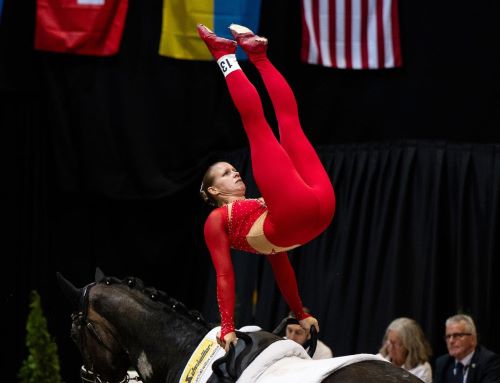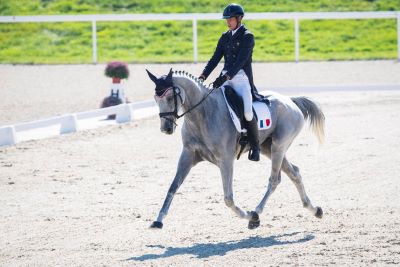Do Horses Sleep Standing Up?
Myth or Fact: Horses sleep standing up. The truth lies in survival. Horse physiology has evolved to give them the best possible chance of procreating the species. And yes, that means horses can sleep standing up. They have specific physiological developments that make standing sleep possible. However, not all their sleep needs can be met while on their feet.
Designed for Survival
The horse “stay apparatus” makes it possible for them to stand and enter the lighter sleep stages. It functions in both the forelimbs and the pelvic region. When the stay apparatus is activated, the muscles are bypassed in favor of the tendons, ligaments, and other connective tissue. These tissues require less muscle activity and reduce fatigue.
The stay apparatus fully supports the horse’s weight without collapsing. However, a horse can wake up and move almost instantly because the muscles are already prepped and in position. In the wild, that gives horses a significant survival advantage over their predators.
More Than Standing
All that being said, all of a horse’s sleep cannot take place while standing. Like humans, horses need rapid eye movement (REM) sleep. During this deep sleep stage, the brain becomes almost as active as it is during the day. Vivid dreaming, muscle spasms, and an increase in heart rate and breathing occur.
A temporary paralysis also takes place during this phase, which is why horses have to lay down for a short time each day. If they didn’t, they may act out dreams, collapse, or potentially injure themselves. Generally, horses only need about 30 minutes of REM sleep to maintain their health, but some may spend more or less time based on their individual needs.
Promoting Better Equine Sleep
Though the structure of the equine sleep cycle may be different from humans, it’s no less vital to their health. People need mattresses to get comfortable, and horses have unique sleep needs too. Horses spend anywhere from five to seven hours in a state of rest. Their deepest sleep takes place after midnight.
Standing sleep doesn’t require much more than a safe, undisturbed space. However, for a short period of REM sleep, horses need plenty of room. Corrals or pens should be large enough that the horse can comfortably lie down. If several horses share an enclosed space, there needs to be enough room that one or more can comfortably lie down at the same time. In a herd, the horses take turns lying down to sleep as a survival measure.
Horses can suffer from REM deficiency and drowsiness if they’re not getting enough deep sleep. We’ve already mentioned how lack of space can limit REM sleep, but so, too, can a horse’s position in the herd hierarchy and/or their physical health. Arthritis can make it difficult for a horse to get up and down, for example.
A bedded area, one that’s large if you’ve got several horses, can help with both issues. Horses prone to arthritis can get comfortable while those low in the hierarchy can lie down without disturbing those higher up the chain.
With the right conditions, your horse should be able to get the rest he needs. Think about what you might need to take along when you travel. It could be extra bedding or panels so that he can easily and safely lie down. When you take the steps to make sure your horse is getting good sleep, you’ll be setting both of you up for success.
Samantha Kent is a researcher for SleepHelp.org. Her favorite writing topic is how getting enough sleep can improve your life. Currently residing in Boise, Idaho, she sleeps in a California King bed, often with a cat on her face.







